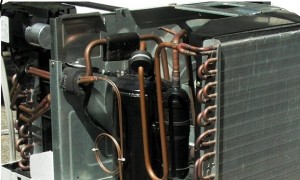The Definition of a Fully Equipped Gilbert Air Conditioning Service Center
Summer temperatures in Arizona place high demands on Gilbert AC repair techs and Gilbert AC service centers. For long periods of time, typical heat indexes can hit and linger in the triple digit range. The city merges big city conveniences into the core of stunning desert terrain known for attracting the attention of people with a mind to be in open spaces.
Gilbert is a good place. The city has class and a sense of character that distinguishes it from other U.S. towns and cities. Yet the harshness of the landscape can lay a heavy toll upon the rugged lovers of the desert lifestyle. Long months of 100-plus degree summer temperatures can be dangerous to even the most rugged Gilbert homeowner.
Making contact with a professional Gilbert AC service center can be one of the most important decisions a Gilbert desert dweller ever makes.
A Division in Quality
Not all Gilbert AC repair techs practice the same principles and not all Gilbert AC service centers provide the same quality of service. Shortcomings in customer service and tech performance can be due to:
- A company’s inability to keep up with the seasonal workload
- Insufficient training of the available personnel
- Insufficient tech-power
- Overworked vehicles
- Limited financial resources
- And many other complications.
No business owner strives to fail, but sometimes companies are forced to operate beneath peek efficiency levels. The Arizona summer is never a time for an AC service center to be short handed or service-equipment hampered. Yet some Gilbert Air Conditioning Service Centers are willing to risk the consequences of reduced personnel and reduced spending on the maintenance of service vehicles.
Being small in size can enable a local AC repair company to offer better upfront prices than what can be obtained via a fully equipped Gilbert Air Conditioning Service Center. But the question remains: Can an understaffed and ill-equipped Gilbert AC Repair Shop provide:
- Guaranteed 24-hour turnaround
- Expert heating and cooling technicians with experience in Carrier, Goodman, Rheem, Trane and others
- Quality customer service
- A complete line of component parts for Amana, Carrier, Goodman, Rheem, Trane or any other top heating and cooling products
- Drug free tested technicians
- A history of being in the same business year after year
- Or the assurance that the AC installer will be around to keep up with customer warranties?
Arizona-Based American Cooling and Heating, a Fully Equipped Gilbert AC Service Center
Every Gilbert AC Repair Center understands the health risks associated with a broken or poorly functional home or business cooling system. American Cooling and Heating knows the value of quick response service calls. They don’t come up short handed on technicians and they don’t come up shy of cooling components or equipment.
In towns and cities where personal comforts are the only criteria for installed air conditioning, late arrival repair techs and delayed component shipments may be questionable but acceptable air conditioning “solution”. In Gilbert AZ, such poor response can result in serious health issues.
Getting technicians to the worksite on time is part of doing the job right. Having on-hand components for Carrier, Goodman, Rheem, Trane and other top HVAC equipment is also part of doing the job right. But technical know-how and skill, professional onsite behavior and quality customer service make the finishing touches.
The AC techs at American Cooling and Heating are:
- Gilbert AC Installation and AC Repair professionals
- Trained in all matters pertaining to the American Cooling and Heating assurance of reliable customer service
- Instructed in the factory specified features of repair and installation for Carrier air conditioning equipment, Trane heating and cooling units, Goodman AC equipment and every other top heating and cooling product on the market
- Certified as one of the most skilled air conditioning technicians in Gilbert Arizona.
Service Center or Fully Equipped Service Center – Which Suits Gilbert Residents Best?
Even the best Do-It-Yourself homeowners get very careful when buying or installing air conditioning equipment. Without the right training and tools, installing an AC can end up wrong in many ways. Saving a few dollars on the front end can result in major expenses at the tail end.
Cheap repairs and AC installations can end up carrying a heavy price tag. To get the best for the least cost includes hiring a Gilbert AC repair center that does the job right on the first go-round. Some Gilbert residents and even some Gilbert businesses may opt to go with an under financed and short staffed repair center. The wise ones, even the DIY masters, tend to stick with a fully equipped Gilbert AC Service Center.
Contact American Cooling and Heating Now.


